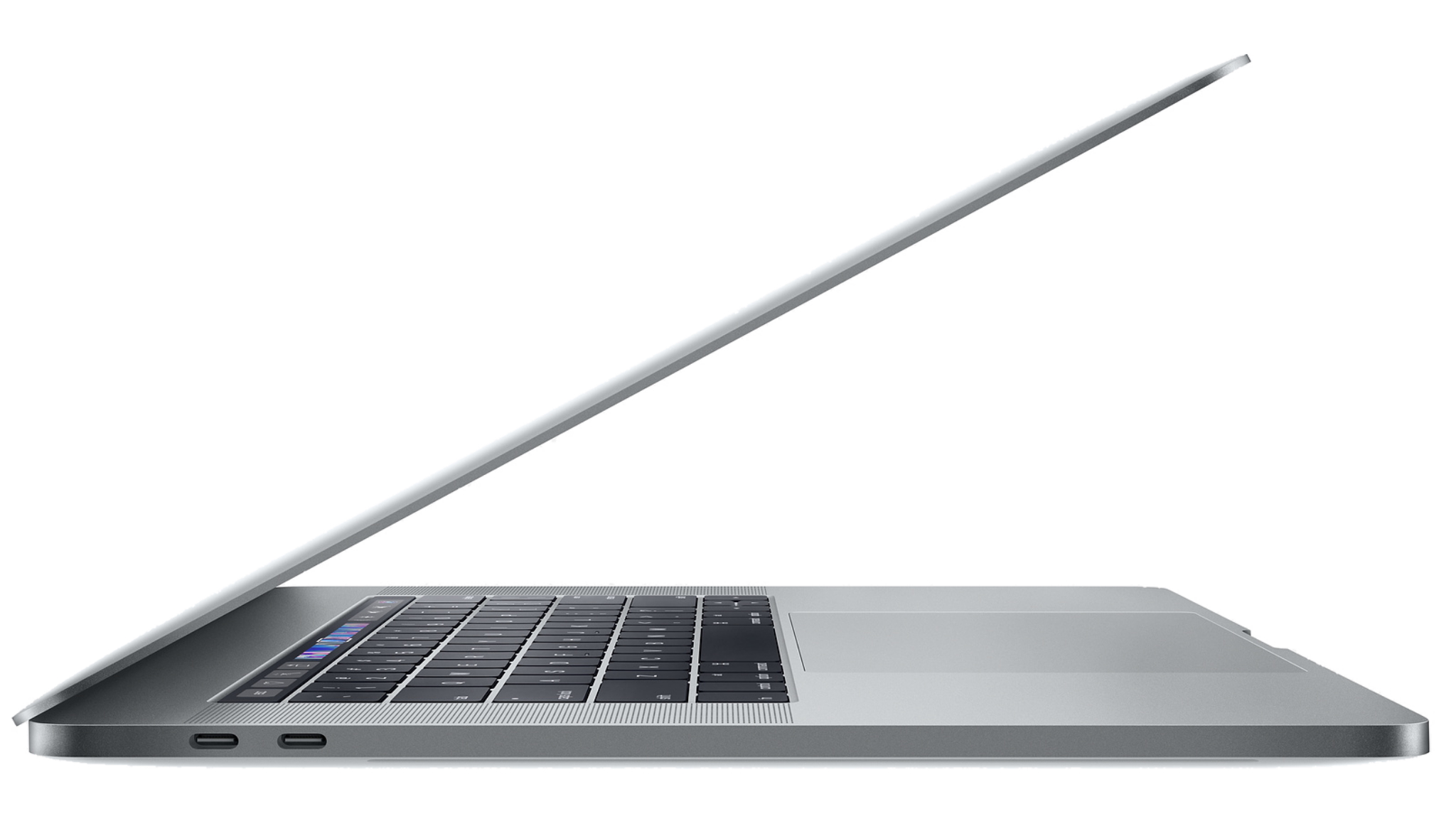https://ift.tt/eA8V8J
We live in a networked world where every computing device can be connected to the internet, whether business computers, laptops, or smartphones, but sometimes Wi-Fi can struggled to keep up.
Wi-Fi 6 is the seamless connectivity we already knew we needed. Five years ago, 11ac Wi-Fi (now rebadged as Wi-Fi 5) entered the scene with drastically improved speeds (2.8× faster) - but it is now facing new challenges.
Thanks to the proliferation of smart home devices and the Internet of Things (IoT), your home network is struggling. To be smart, each of these devices needs access to the internet, and with so many devices fighting connectivity your router will be overwhelmed, bringing your network to a grinding halt.
And there is no end in sight for our appetite for smart devices, take smart speakers, 40% of UK households plan to purchase a voice-controlled digital home assistant device in the next five years.
To meet consumer demand, Wi-Fi is now welcoming its next iteration and bringing with it a new standard—Wi-Fi 6. While Wi-Fi 5 focused on increasing speed, Wi-Fi 6 is designed to do more than simply boost speeds.
It aims to solve congestion, reducing latency and satisfy the growing need for efficient Wi-Fi connections, by supporting more simultaneous device connections without compromising on the experience. But first, we should really answer the basic question.
What is Wi-Fi 6?
Wi-Fi 6 is the newest Wi-Fi standard. Obviously, given that it’s Wi-Fi, it wirelessly connects you to the internet. The number 6 indicates that it is the sixth iteration of Wi-Fi standards. Like previous Wi-Fi standards, Wi-Fi 6 was built to facilitate increased network speeds whilst aiming to solve the congestion from having more connected devices than ever before.
Wi-Fi 6 is designed to facilitate today’s gluttonous data consumption. Driven by streaming services like Netflix, YouTube and Twitch every home needs a high speed, stable and secure network, including Wi-Fi extenders. It’s in congested homes that the benefits of Wi-Fi 6 are really felt. With a single connected device Wi-Fi 6 enables data transfer speeds up to 40% faster than capable with Wi-Fi 5. However, it’s under heavy network loads that Wi-Fi 6 truly shines. But why would you want it?
Faster than Gigabit
Basically, Wi-Fi 6 enables faster than Gigabit data transfer speeds over wireless. In real world testing, Wi-Fi 6’s single stream speed has been raised to 1.2 Gbps—20% faster than connecting via gigabit Ethernet.
When you look at the theoretical top speed, Wi-Fi 6 reaches 9.6 Gbps (compared to Wi-Fi 5 which clocks in at 6.9 Gbps). Most wireless routers won't currently be able to support this speed—8 antennas and huge amounts of power are required—however wireless speeds higher than 1 Gbps still deliver three core advantages:
- Gigabit wireless within a home means that users will be able to make full use of their potential bandwidth when connecting a single device,
- In the more likely scenario of multiple devices connecting to the network at the same time, more users can share high-speed Wi-Fi with its high bandwidth able to cater to a number of users simultaneously,
- Intranet, or the network within your home, goes to Gigabit wirelessly, making downloads, streaming and file transfers within your home faster and easier.
More devices and smoother connections
The need for a new generation of robust and high performance wireless networks is being amplified by the rapid uptake of connected consumer devices. It’s estimated that by 2030, the average person will own 15 connected devices and networks must be ready and prepared to perform at their best when users are constantly expanding their set of devices and using mesh Wi-Fi routers for connecting large homes, as well as operating across a number of these devices simultaneously.
When devices are added to a network, the performance typically reduces as routers can only communicate with one device at one time (though the multi-user wireless technology, MU-MIMO makes simultaneous communication possible for up to four devices). This causes other devices to wait and inevitably reducing their speeds. Wi-Fi 5 has struggled to tackle these emerging problems. For example, downloading videos might make your game lag or video chatting with a friend may jitter in low-quality when another member of your household streams an HD movie or listens to Spotify on wireless earbuds.
To make Wi-Fi sharing frictionless for every user, Wi-Fi 6 introduces a core technology that drastically improves the connectivity - OFDMA - which calculates the bandwidth needs of each client. This enables sending or receiving data for multiple clients in one broadcast simultaneously possible, so that Wi-Fi performance remains seamless, which you can check with network monitoring tools. To put this into context, imagine a series of delivery trucks delivering data. Under Wi-Fi 5, one truck (one broadcast) only carries data for one person. Yet with the new standard, each truck can now carry data for multiple people, as long as the space is sufficient.
This serves modern applications such as through gaming routers and streaming extremely well, by cutting the latency and improving average speed. OFDMA technology was applied to mobile networks to improve data transfer speeds to phones and successfully resolved the congestion problem. Now, you know why the Wi-Fi network in the airport lags, yet your phone can flawlessly stream videos in the same location by switching to your 4G mobile network.
MU-MIMO also gets a make over in Wi-Fi 6. MU-MIMO was introduced in Wi-Fi 5 as an amendment and allows up to four streams for different devices. Going back to the delivery truck example, think of these streams as the four highways the trucks can run on. However, it only works in the downlink direction and with Wi-Fi 6, the number of streams available has doubled. Now, there are eight “highways” for devices to simultaneously connect through and MU-MIMO works both for uplink and downlink.
With upload speeds traditionally slower than that of downloads, the capacity increase facilitated by the technology allows for the same level of performance in both scenarios - whether this be lag-free video calling, faster file transfer to the cloud as well as streaming on entertainment sites, such as Twitch and YouTube, as well as adding wireless devices to your network, such as wireless chargers and wireless printers.
It’s More Secure (in a Friendly Way)
Wi-Fi has been using WPA2 as its recommended security protocol since 2004. However, WPA2 is crackable—a hacker can capture data from the Wi-Fi streams and try millions of combinations to figure out a password. With the right match, the hacker can use these credentials to connect to the Wi-Fi network, and all things transferred within it become accessible and at high risk of compromise.
In an effort to mitigate this risk, every security agency is inevitably urging people to use passwords consisting of random letters, numbers and symbols to make the security codes harder to crack. However, most people will agree that remembering (or even smoothly typing) a password like this can be extremely difficult.
Within Wi-Fi 6, WPA3 is introduced to resolve this issue, by generating a live password with every data transmission. The password that matches that particular data is no longer valid by the next transmission, forcing hackers to guess the password by interacting with Wi-Fi devices.
This method won’t necessarily work, however, as Wi-Fi devices can block the hacker’s device if it fails too many times. This means that users can keep their networks secure whilst using a password which is much easier to remember. This will result in much more secure routers.
What’s more, new security protocols were announced in 2018 by the Wi-F Alliance, and Wi-Fi 6 will be backing this new protocol to become the new, mandatory Wi-Fi encryption method.
It Saves the Battery of Mobile Devices
After fixing the safety issues, Wi-Fi 6 keeps on giving. Users will be delighted that two new features within Wi-Fi 6 will extend battery life on smartphones and tablets, so they can go longer between charges.
Firstly, Target Wake Time schedules the transmission cycle for each device, which allows devices to “sleep” more. In other words, mobile devices can keep their antenna deactivated and only turn it on at the times negotiated with the router, resulting in longer battery life.
Wi-Fi 6 also allows a power-saving 20 MHz stream to coexist with the high-speed 160 Mhz. This feature is particularly useful for battery powered IoT devices like wireless cameras and sensors. All devices connecting to a Wi-Fi 5 network are set to 80 MHz, and will maintain the same speed using the same bandwidth.
It Works with Existing Devices
Given that devices won't be switched over to the new standard overnight, just like its predecessor, Wi-Fi 6 is fully backwards compatible with older Wi-Fi standards—without needing extra settings. Introducing a Wi-Fi 6 router can prepare a home network for the future of Wi-Fi, whilst improving the network experience on existing Wi-Fi devices with next-generation routers, by bringing cutting-edge hardware that outperform models with past iterations of the Wi-Fi standard.
With its huge potential to deliver on the need for seamless connectivity, Wi-Fi 6 devices are starting to make waves across the consumer market —Samsung, Dell, and Razer have all included Wi-Fi 6 support in their latest products. The recently launched iPhone 11 also supports Wi-Fi 6 - a trend which will undoubtedly become standard for all new devices entering the consumer technology market in due course.
What’s more, we’re now also seeing another wave of products - which make existing devices Wi-Fi 6 enabled - emerge and present users with another way to improve their connectivity performance.
While users may not necessarily purchase a laptop simply because it is Wi-Fi 6-enabled, there are various advantages to be had for investing in the future stability and performance of a Wi-Fi network, as both work and life become increasingly connected.
For example, Wi-Fi 6 routers utilise the latest CPU and chipset, which are significantly more powerful than a Wi-Fi 5 router and typically at the same price. When it comes to speed, Wi-Fi 6 devices are more likely to maintain a higher speed when connecting more devices, than a Wi-Fi 5 router with a similar speed. Running memory is also higher than that of Wi-Fi 5 routers, meaning they can bear more data for multiple applications.
Working in conjunction with advances in modern networking hardware, the unique traits of Wi-Fi 6 hold huge potential for a future of frictionless connectivity in both consumer and enterprise settings. With better support for device ecosystems as they continue to grow, utilising this technology will eliminate Wi-Fi challenges set by the pace of modern technology and enable users to take full advantage of tomorrow’s technology, today.
Will Liu is the Managing Director of TP-Link UK.

from TechRadar: computing components news https://ift.tt/330exBc
via
IFTTT






























